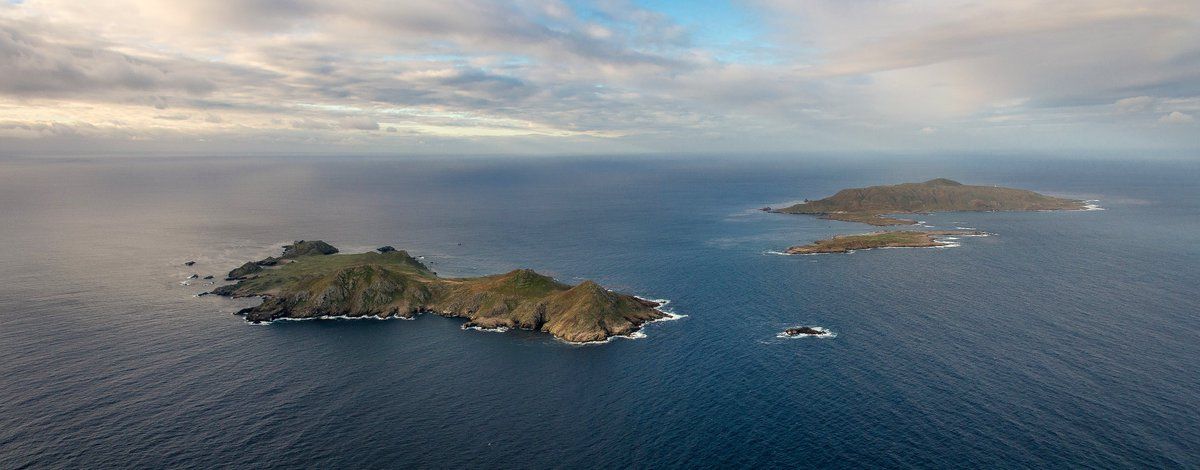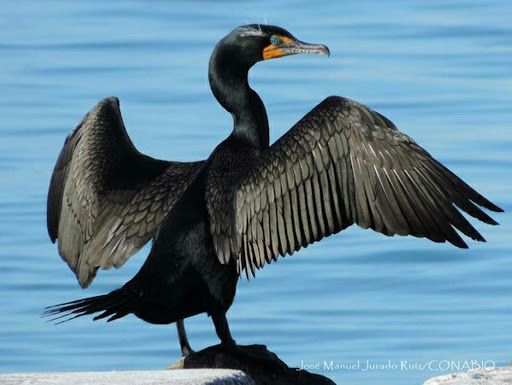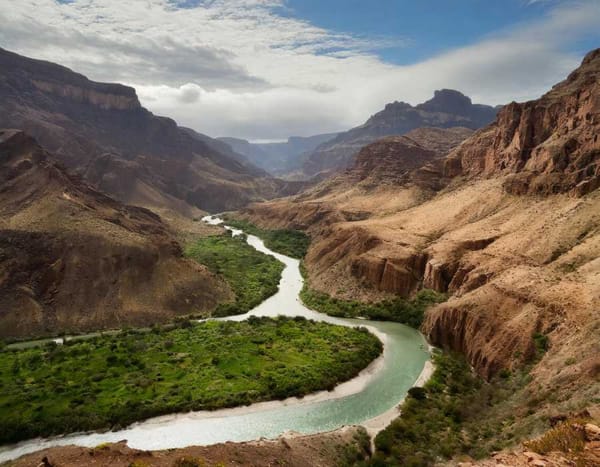Birds in the Pacific Islands of Baja California
In the Baja California Peninsula region, there, the 1,501 islands are home to great biological diversity, including species unique in the world, and are important breeding, feeding, and resting grounds for a wide variety of seabirds and marine mammals.

Mexico is a country whose national territory extends over 5 million km2. Of these, according to INEGI, the Exclusive Economic Zone (a maritime zone more extensive than the territorial sea, in which Mexico retains the same rights as in the former, but "allows the free circulation of foreign vessels and the installation of diverse routes") comprises more than 3 million km2, thanks to the more than 4,000 islands, keys, and reefs of all its coasts, whose wealth is extraordinary.
This richness is particularly noticeable in the northwest of Mexico, in the region of the Baja California Peninsula. There, the 1,501 islands are home to great biological diversity, including species unique in the world, and are important breeding, feeding, and resting areas for a great variety of seabirds and marine mammals. These islands are also a source of livelihood for local communities with artisanal fisheries.
Given their biological, economic, and social importance, almost all of Mexico's islands are now legally protected. The northwestern islands, by decree of the National Commission of Natural Protected Areas (CONANP), are part of the Flora and Fauna Protection Area of the El Vizcaino Biosphere Reserve and the declared Pacific Islands Biosphere Reserve of the Baja California Peninsula.
Mexico's islands: key sites for seabirds
Seabirds are an indispensable component of island ecosystems. Thanks to the nutrients they provide - mainly through the accumulation of their excrement (guano) - they sustain the high diversity of flora and fauna that exist in both terrestrial and marine environments. Species of great commercial value, such as abalone and lobster, are part of this diversity. In addition, seabirds are excellent indicators of the health of the environment, as they respond almost immediately to variations in ocean conditions, and many of them are also connectors of large marine regions, as they transcend political boundaries by migrating thousands of kilometers away from their nesting sites.
Mexico's seas and islands are home to one-third of all the world's seabirds, making Mexico third in diversity and second in several endemic species, i.e., those that breed exclusively on Mexican islands. Among these unique birds are the Mexican shearwater (Puffinus opisthomelas), which concentrates 90% of its population on Natividad Island, off the coast of Baja California Sur; the least petrel (Oceanodroma microsoma), whose main colony is located on Isla Partida, in the Gulf of California, off the Bay of Los Angeles; and the Revillagigedo Islands shearwater (Puffinus auricularis), whose only current colonies remain on Socorro and Clarion Islands, in Revillagigedo National Park. In addition, these seas and islands are internationally recognized as Important Bird Areas.

Historical threats to seabirds
Throughout history, humans have explored the seas in search of goods or services that benefit their culture. One of the strategies of navigators was to take advantage of islands to extract natural resources, in addition to using them as resting or orientation sites. As a consequence, in the Pacific Ocean, seabird colonies and, in general, all-island ecosystems, began to be threatened by the presence of invasive exotic mammals, such as cats, rats, rabbits, and goats, among others, that humans introduced during these voyages, either accidentally or for consumption. Later, during the last century, guano extraction and egg consumption also became important activities on some of these islands, causing habitat destruction and great disturbance to bird colonies.
The consequences were catastrophic: four native rodent species and the Guadalupe petrel (Oceanodroma macrodactyla) became extinct, and at least 28 seabird colonies were extirpated (eliminated from some islands but not extinct as a species). The dusky-winged shearwater (Ptychoramphus aleuticus), a bird that nests in subway burrows, disappeared from virtually all of its nesting sites in Mexico, with only its largest population remaining on San Jeronimo Island, off the town of El Rosario, Baja California. Likewise, the colony of the Great Eared Cormorant (Phalacrocorax auritus) on San Martin Island, off San Quintin, B.C., once considered the largest colony in North America with nearly half a million pairs, disappeared due to human disturbance. History repeats itself for many colonies of pelicans, murrelets, terns, and petrels that stopped nesting on these islands.
Furthermore, the contamination of the waters of the California Current, caused by the dumping of the insecticide known as DDT (dichloro diphenyl trichloroethane) and compounds called PCBs (polychlorinated biphenyls), as well as oil spills, caused great devastation to seabird populations in the United States and Mexico. The chemical company Montrose dumped DDT into the ocean off Los Angeles, California, for more than four decades. This compound caused eggshell thinning in several bird species, and for many years there was no recruitment of new individuals to colonies; the brown pelican (Pelecanus occidentalis) was one of the most affected species. In the Coronado Islands, in front of the city of Tijuana, a colony of thousands of pairs of brown pelicans was reduced to hundreds. Similarly, the sinking of the S.S. Jacob Luckenbach off the coast of San Francisco in 1953 caused the spill of more than 500,000 gallons of fuel and continued to leak for fifty years. This caused the decline of many seabird populations.
Restoration actions
The hard work of Grupo de Ecología y Conservación de Islas, A.C. for more than 20 years is bearing fruit. Currently, 21 seabird colonies that had been extirpated have already recolonized the islands. This means that 75% of the colonies have been restored, and indicates that we are well on our way to getting all the colonies back. The islands are now also very attractive sites for other birds that have never nested here before, such as the Caspian Tern (Hydroprogne caspia), which is beginning to nest on San Martin and San Geronimo islands. Currently, the greatest challenge is to ensure the permanence of these achievements in the long term. For this reason, there is also an island biosecurity program in which the necessary measures are promoted to protect island environments from invasive alien species; for example, arriving at an island with clean clothes and belongings free of soil, seeds, propagules, and insects.
Thus, seabirds, in addition to providing important services for the proper functioning of ecosystems, serve as an inspiration, teach us that borders are imaginary, and motivate us to take care of our environment for the sake of their colonies and their chicks. We can all do our bit for the conservation of their fragile homes. The conservation of the islands is in our hands.
Authors:
Yuliana Bedolla Guzmán is a PhD candidate at Justus Liebig Giessen University in Germany. Since 2010 she has worked at Grupo de Ecología y Conservación de Islas, A.C., where she has participated in several ecological restoration projects on islands throughout Mexico. She currently directs the integral seabird restoration program through the use of social attraction techniques, monitoring, research, and environmental learning. His interests include ecology, biogeography, and restoration and conservation of island species.
Mariam Latofski Robles studied her master's degree in Environmental Sciences in the international multidisciplinary program between the Universidad Autónoma de San Luis Potosí and the Cologne University of Applied Sciences in Germany. Since 2008 she has worked at Grupo de Ecología y Conservación de Islas, A.C., where she has coordinated several restoration projects. She is currently director of the Development Department and is responsible for the components of island biosecurity and environmental learning in different islands of the country.
Federico Méndez Sánchez studied for a Master's degree in Environmental Management at the University of Auckland in New Zealand. He has worked at Grupo de Ecología y Conservación de Islas, A.C. since 2006, and was appointed General Director in 2017. He has collaborated in both fieldworks on restoration projects and planning.
Source: UNAM




